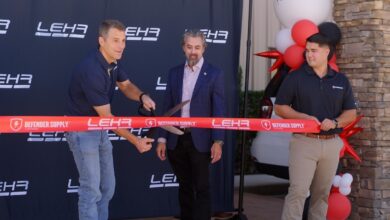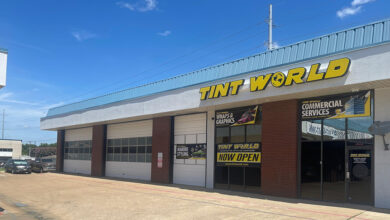Southern Nevada First to Digitize Streets for Highly Automated Vehicles
The Regional Transportation Commission of Southern Nevada (RTC) this spring became the first road authority in the world to complete digitization of its local traffic rules and restrictions in two busy areas for highly automated vehicle (HAV) testing and deployment. The RTC is using INRIX AV Road Rules to assign, validate and manage rules of the road for the safe and effective deployment of HAVs on public roads where vehicles will operate.
“Southern Nevada is committed to staying at the forefront of advanced transportation technology testing and development, so we’re excited to partner with INRIX on this groundbreaking project that focuses on ensuring autonomous vehicles can safely navigate our streets,” said RTC General Manager Tina Quigley. “INRIX AV Road Rules lays the foundation for piloting HAVs on public streets by facilitating access to an important dataset that road authorities are in the unique position to provide.”
INRIX AV Road Rules enables cities and road authorities to quickly and easily digitize local restrictions such as speed limits, crosswalks, school zones and stop signs, and provide this data via an open API, allowing automakers and HAV operators to ensure vehicles comply with local guidelines.
Beginning at the Consumer Electronics Show (CES), the RTC has made sure HAV operators have access to ground-truth, road authority-verified traffic guidelines that will help ensure successful operation of automated driving systems on two key areas in Las Vegas: on Fremont Street in downtown Las Vegas and an area near the Las Vegas Convention Center, where vehicles will be operating during CES. AV Road Rules also allows cities to leverage information from HAVs to report infrastructure improvement needs like potholes, worn lane striping or missing signage, improving safety and performance for all road users.
“Automated vehicles are poised to dramatically improve mobility around the world -“ making vehicle travel safer, more efficient and higher quality,” said Avery Ash, head of autonomous mobility. “Data plays a central role in the safe operation of HAVs on public roads. By leveraging INRIX AV Road Rules to digitize local traffic rules and restrictions, Southern Nevada is taking the necessary steps to ensure successful testing of HAVs.”
Successful deployment of HAVs goes beyond piloting on public roads. Building public understanding and acceptance of automated vehicles is also a critical step. At CES, INRIX has joined Partners for Automated Vehicle Education (PAVE), a newly formed coalition of industry, nonprofit and academic institutions with one goal: to inform and educate the public and policymakers on the impact HAVs will have on shaping the future of mobility. PAVE members include AAA, Audi of America, Daimler, INRIX, Intel, National Safety Council, NVIDA, SAE International, Toyota, Volkswagen and Waymo, among others.
For more than 10 years, INRIX has been working with public agencies and vehicle operators around the world to manage and improve transportation for human-driven vehicles. INRIX is leading the charge to ensure HAVs are safely integrated into the world’s road networks, providing the tools and analysis needed to improve and validate their safety and performance.
Seven cities and road authorities and four HAV operators are currently using INRIX AV Road Rules, and many more have expressed interest in joining when it expands later this year. The initial set of pilot users includes cities and road authorities with a variety of sizes, climates and geographies: Austin; Boston; Cambridge Massachusetts; Portland, Maine. Automakers and operators slated to use the platform at launch include Jaguar Land Rover, May Mobility, nuTonomy (an Aptiv company) and operators running Renovo’s Aware platform.



